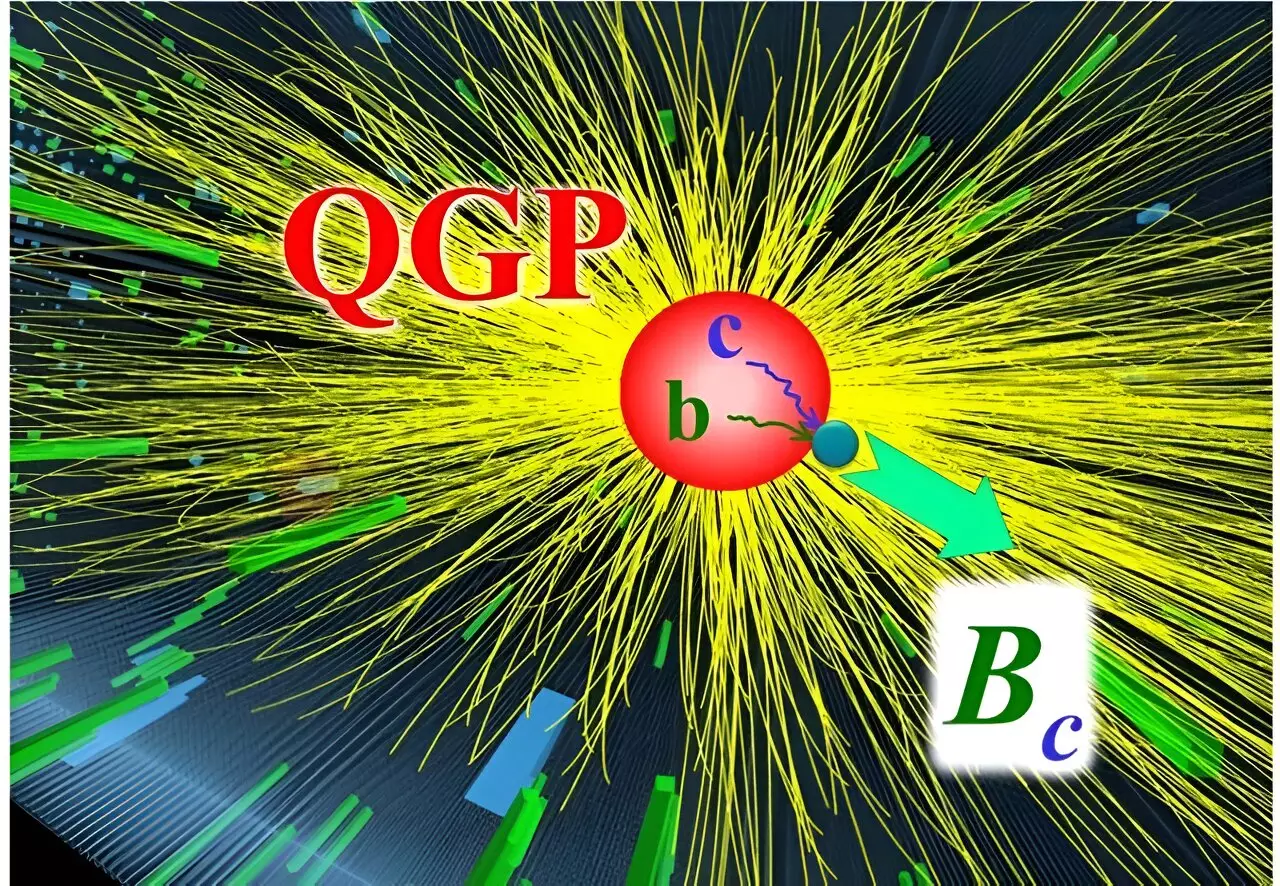The recent research conducted by the HEFTY Topical Collaboration delves into the recombination of charm and bottom quarks leading to the formation of Bc mesons within the quark-gluon plasma (QGP). Through the development of a novel transport model, the researchers aimed to simulate the kinetics of heavy-quark bound states within the expanding QGP fireball generated during high-energy heavy-ion collisions.
The detection and analysis of QGP formation in heavy-ion collisions play a crucial role in understanding the behavior of fundamental particles under extreme conditions. In order to distinguish QGP signatures from other collision types, such as proton-proton collisions, researchers rely on specific detectors that track the unique signals produced by different particles.
The theoretical simulations conducted by the researchers revealed that the recombination of charm and bottom quarks within the QGP environment significantly enhances the production of Bc mesons. This phenomenon, absent in proton-proton collisions, serves as a distinctive signature of QGP formation, allowing for accurate identification of the presence of the quark-gluon plasma.
The utilization of realistic spectra of charm and bottom quarks, obtained through their diffusion in the QGP, enabled the researchers to evaluate the recombination processes effectively. The findings demonstrated a substantial increase in the yield of Bc mesons during lead (Pb) nuclei collisions compared to proton collisions, with the most significant effect observed in slow-moving Bc mesons resulting from “head-on” Pb nuclei interactions.
The theoretical predictions align closely with preliminary data from the CMS collaboration at the Large Hadron Collider (LHC), providing initial validation for the transport model and simulation results. However, the current data lack sensitivity towards slow-moving Bc mesons, highlighting the need for future experiments to further validate this unique QGP signature and its implications.
The study on the recombination of charm and bottom quarks into Bc mesons within the quark-gluon plasma showcases a promising avenue for enhancing our understanding of heavy-ion collisions and the intricate dynamics of fundamental particles under extreme conditions. The research findings not only contribute to the existing body of knowledge in high-energy physics but also pave the way for future investigations aimed at unraveling the complexities of QGP formation and its associated signatures.


Leave a Reply